New Radio for my QTH, Icom’s IC-7300
For almost a month now I’ve had a new radio at home, an IC-7300. When I was returning to amateur radio and getting into HF in early 2023, I knew I wanted this radio. David Casler listed it as part of his General reference station; the IC-7300 is one of the most popular HF base stations today. It is a great beginner radio for the price.
There are a ton of great resources on the IC-7300 (a key reason I wanted one). Here is a video from VK3BL that I found especially helpful to learn how to tune my radio.
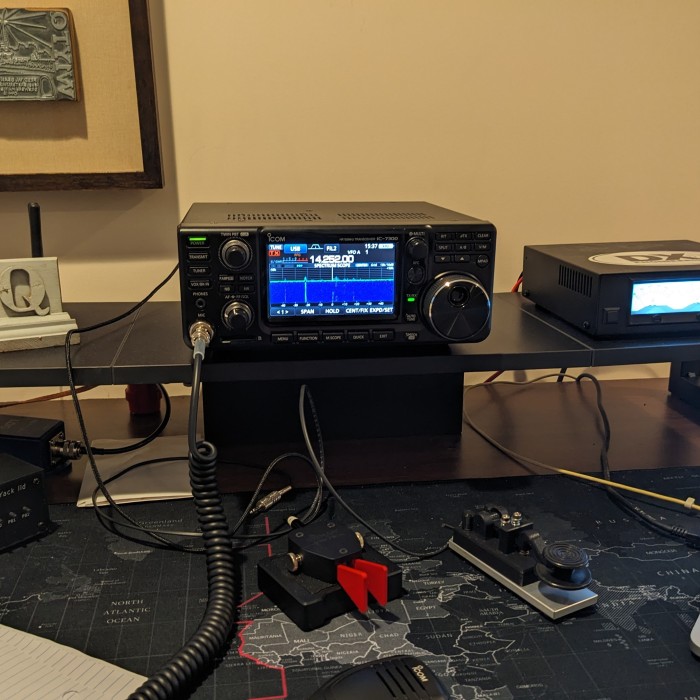
I started with the G-90 because I was new to the hobby and it was about half the price at the time of the IC-7300 and I knew for certain that I wanted to get into field and portable operations.
After a month with the IC-7300 I can tell you that it’s a great radio for the money and I’m very glad it is my main home base transceiver. The 100 watts output (as opposed to the G90’s 20 watts output) makes it much easier to make contacts farther away and be heard within a pile-up.
Going from 20 watts to 100 makes it much easier to complete a QSO and be heard within a pile-up
Great support for digital modes
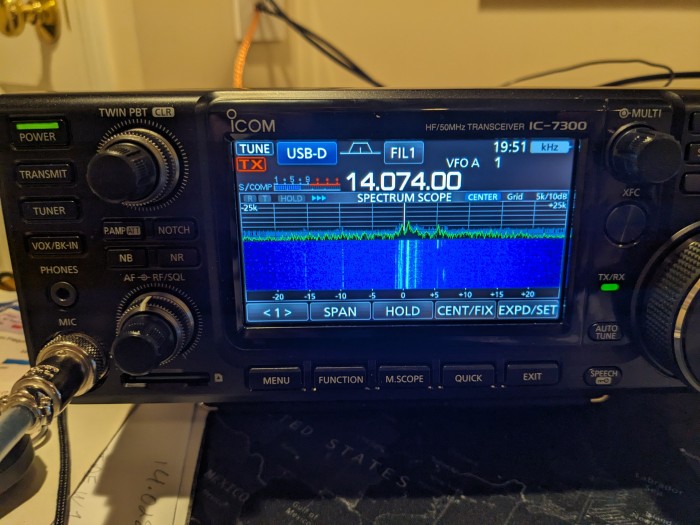
The IC-7300 has a built-in sound card and is ready out of the box for digital modes like FT8. I plugged the radio into my Mac via a standard USB cable, installed and fired up WSJT-X and within 30 minutes or so, I was making my first FT8 contacts.
One issue I’ve experienced is EMI traveling from the radio, up the USB cable to my laptop. I’ve added some ferrite magnets to the cable and it seems to happen less often. But it still happens once in a while. I probably need more ferrite cores.
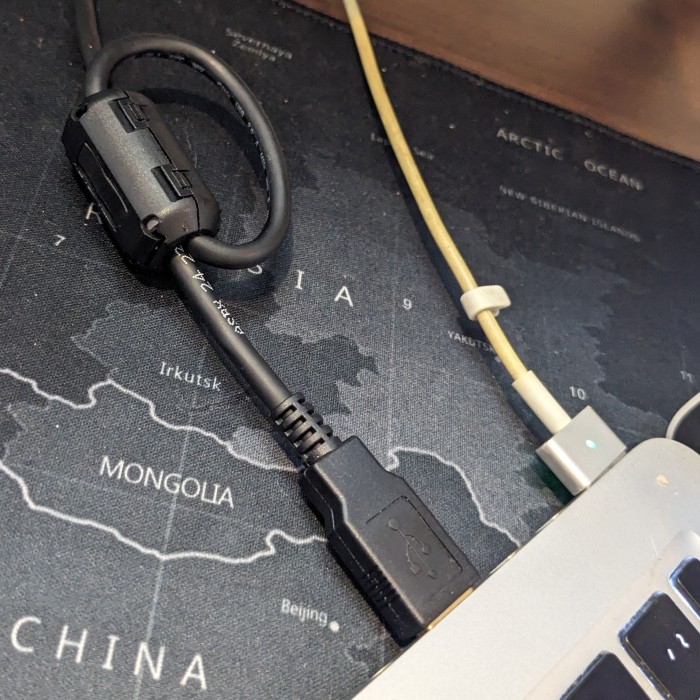
Here’s a screenshot of WSJT-X during an FT8 session.
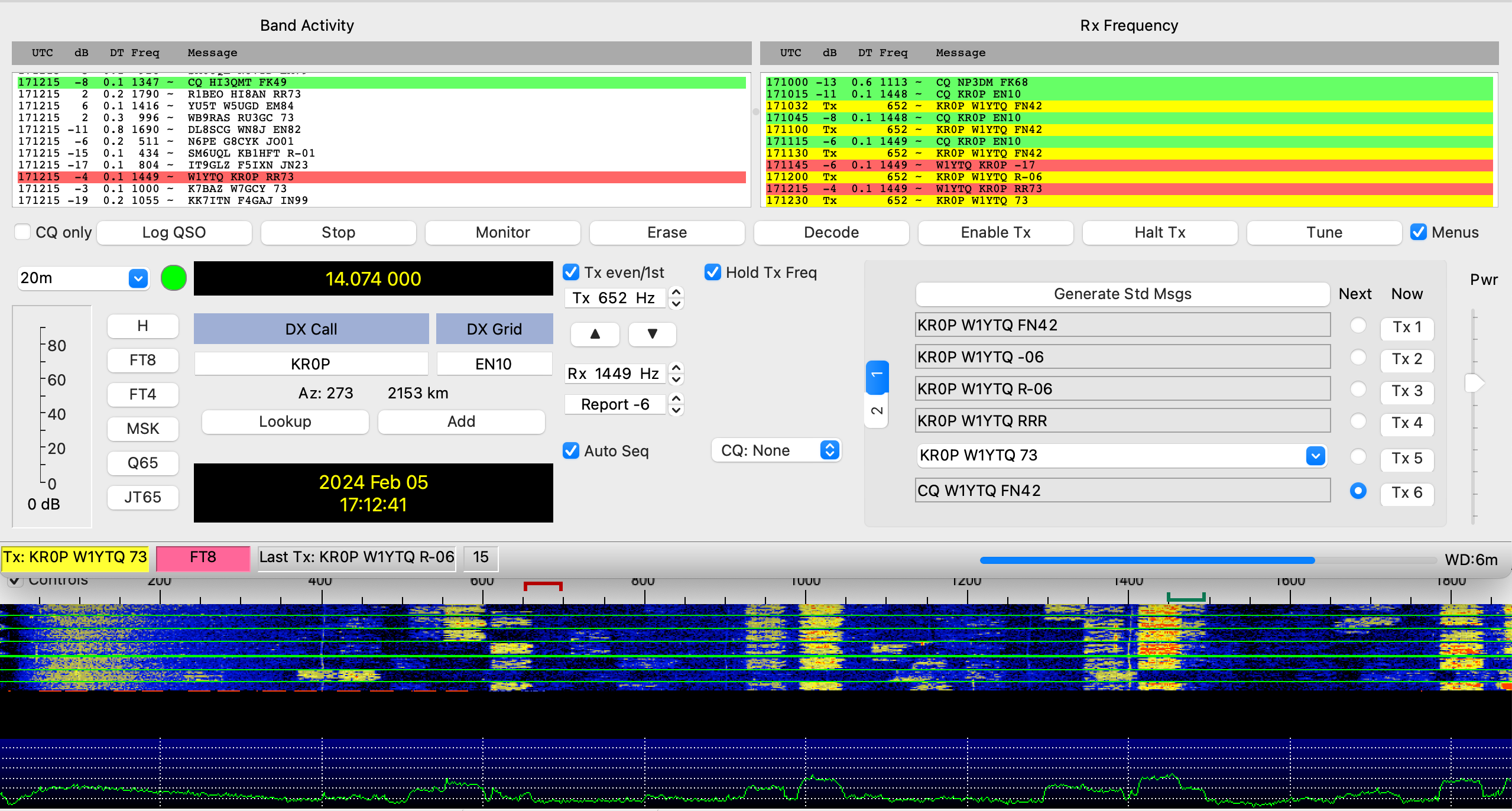
And here’s a map of my FT8 contacts in the first 30 days of my radio.
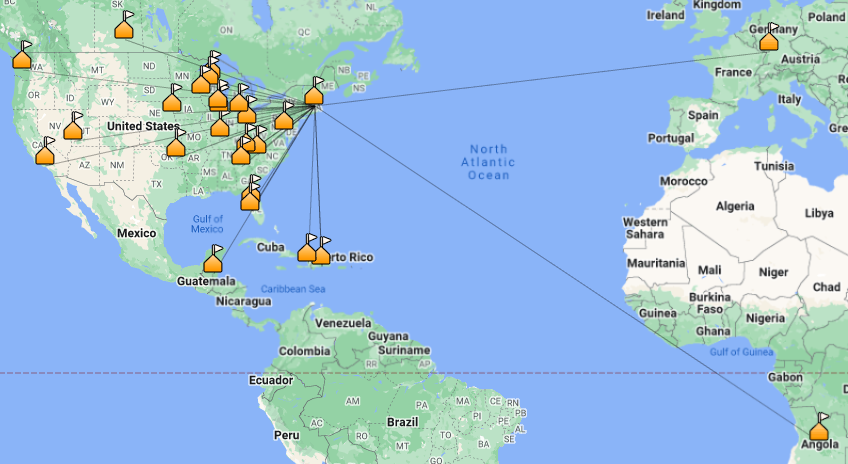
Summary of my first 30 days with the radio
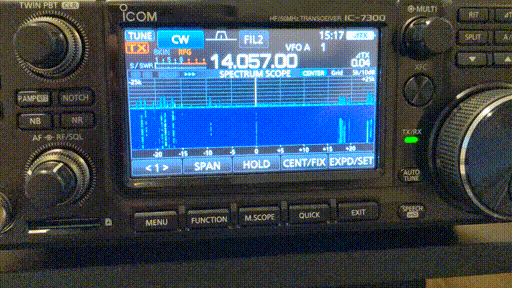
I like the waterfall display. The multitude of controls for customizing filters, CW tone and display are really pleasing. I’m really enjoying the radio and like the option of transmitting at 100 watts.
Here’s are the contacts I made in the first 30 days of having my IC-7300.
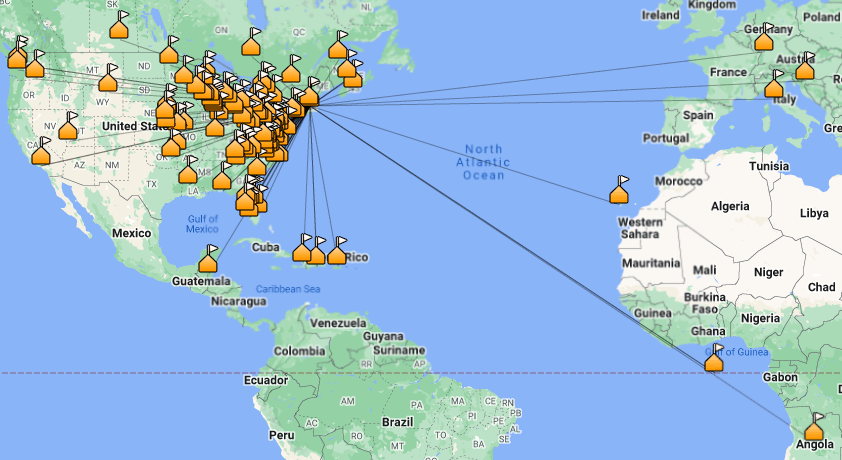
CW is my favorite mode. I do a lot of CW POTA hunting. Here’s a chart showing my mode preferences.
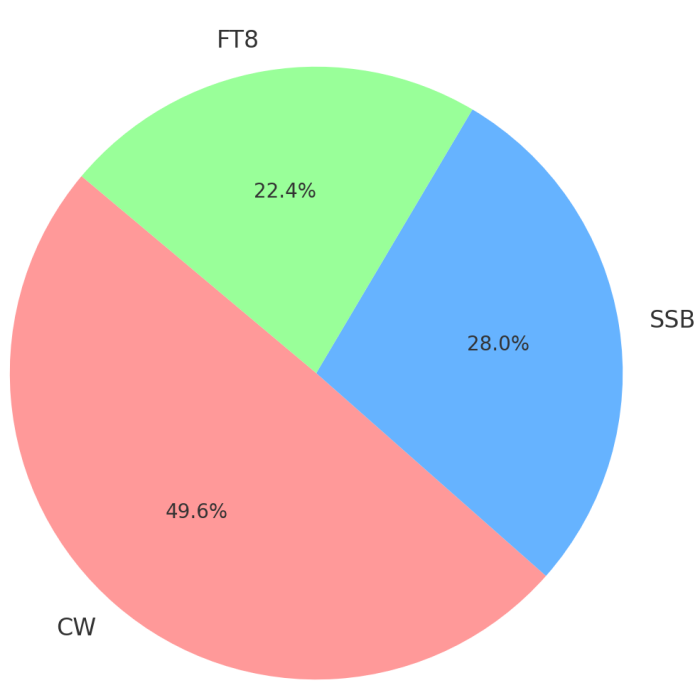
A Chat GPT analysis of my ADIF files
To digress, while writing this post, I exported an adif file and CSV file of my radio work since getting the IC-7300. On a whim I uploaded it to Chat GPT and then asked it to summarize my activity.
I asked, “Can you make generalizations regarding the relative median distances of the contacts made for the different mode categories?”
Chat GPT provided the following answer:
I asked, can you show the data in a chart plotting each mode’s distribution of contacts over an X-axis of “distance”?
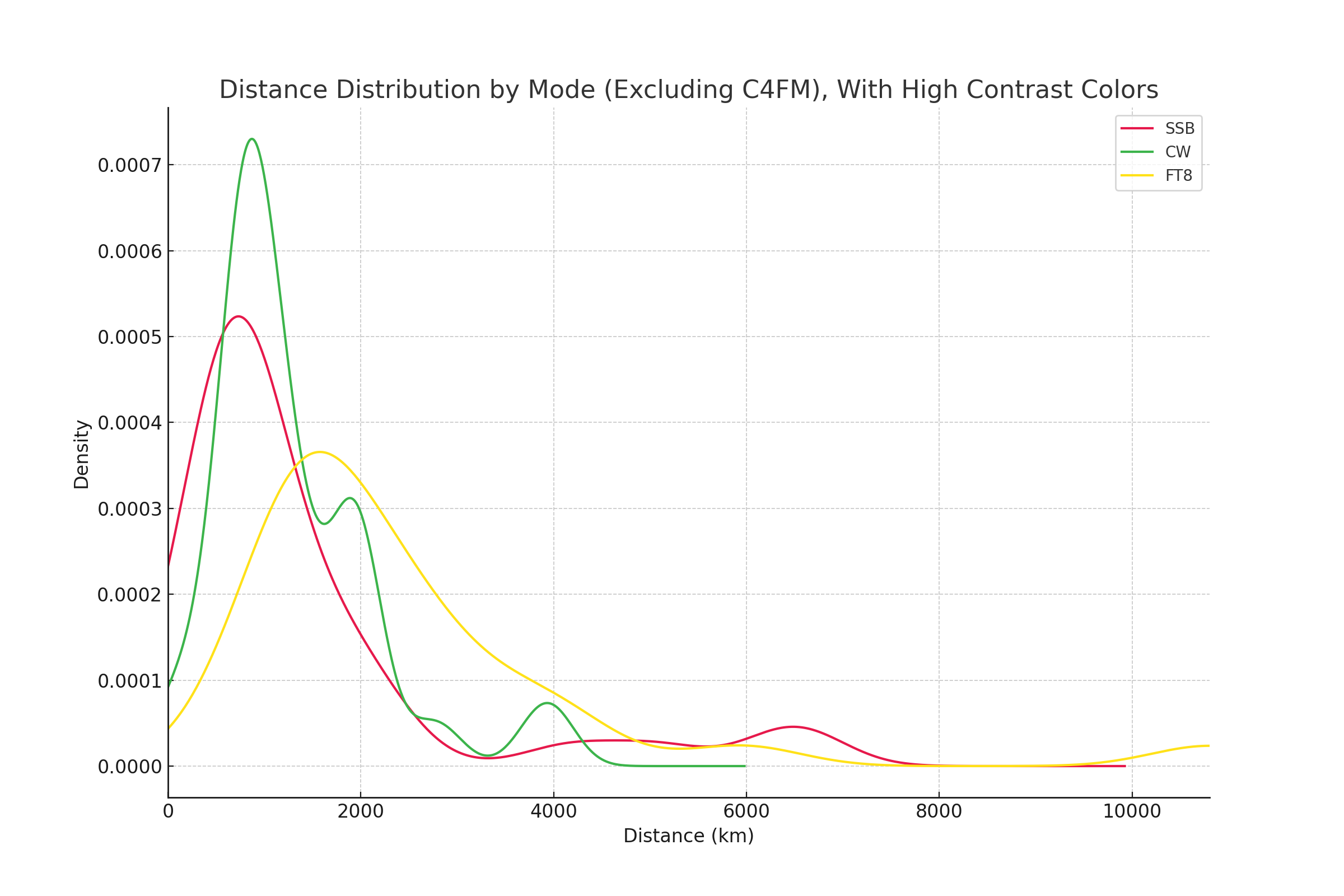
These distributions probably reflect my personal operating habits more than each mode’s performance.
- I’ll often do SSB in the morning. So I get a lot of trans-atlantic SSB contacts
- I do a lot of CW but it is mostly POTA hunting in the late afternoon. So it is mostly domestic contacts.
- My FT8 use is spurious - sometimes in the evening while enjoying a drink